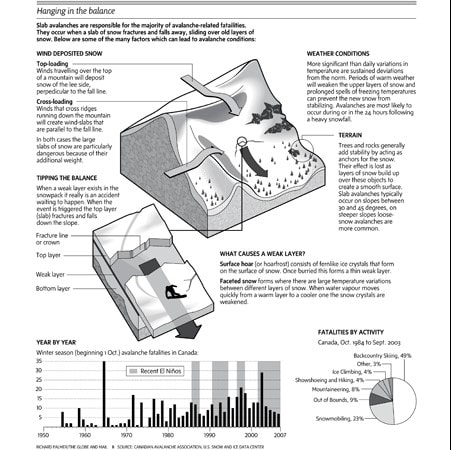IASbaba's Hot Questions, IASbaba's Think Learn Perform 2016, IASbaba's TLP - 2016, Think Learn Perform (TLP)- 2016, UPSC Mains Answer Writing - 2016, UPSC Mains Questions 2016
ARCHIVES
SYNOPSIS- IASbaba’s TLP 2016 [24th August] – UPSC Mains GS Questions [HOT]
1. What triggers a tsunami? Discuss at least four factors that lead to tsunami-genesis. Also explain the effects of tsunami in the coastal regions.
Introduction:
Tsunami is harbor wave which consists of a series of seismic waves which rise as high as 10m or more. They move inland, several hundred miles causing untold disaster.
Body:
- Factors that lead to tsunami-genesis:
1.Earthquakes: Earthquake occurring beneath the sea-when thrust faults associated with convergent or destructive plate boundaries move abruptly, resulting in vertical water displacement.
(http://www.workbook.com/view/illustration/steve_stankiewicz/gallery/chartsinfographics/image/435156)
2.Volcanic eruptions-80% happen within Pacific ocean’s “Ring of fire” where earthquakes and volcanoes are common. Volcanic eruptions can cause discharge of large amounts not energy in a small amount of time, this energy is in turn imparted to the water which causes tsunami.
3.Landslides: under ocean landslides can cause disequilibrium in the ocean water, which will move towards the shore as tsunami to regain isostasy.
4.Meteorites and nuclear explosions: both of them can use release of huge amounts of energy in a few seconds, which will cause the displacement of water.
- Effects of tsunami in the coastal regions:
- On PEOPLE: huge loss of life and damage bringing debris in home resulting in traumatic injuries and infections. Risk of disease outbreaks, along with food-borne and water-borne illnesses. Psychological effect on people.
- On ECONOMY: Tsunamis damage land and infrastructure, rendering businesses incapable of production and paralyzing agricultural operations, in turn reducing economic vitality in affected areas.
- On ENVIRONMENT: contamination of soil and water, a permanent change to the landscape, solid waste and disaster debris, and hazardous materials and toxic substances. Small islands get submerged, habitats of many animals are lost.
Although a tsunami cannot be prevented, the impact of a tsunami can be mitigated through community preparedness, timely warnings, and effective response
Conclusion:
Write a brief conclusion.
Best answer: Jyoti
Tsunami means harbor waves which consists of a series of waves which rise as high as 10m or more. They move inland, several hundred miles causing untold disaster.
Tsunamis can be caused by a number of factors
1)Earthquake :
Ocean floor get displaced which creates a gap that is filled with huge mass of ocean water. When this water rushes back towards the coastline, the displaced water forms a wave. As the wave travels and enters shallower water in the coastal area, it begins to increase in amplitude causing Tsunami. Eg: 2004 Tsunami
2)A large-scale undersea landslide:
Landslides are similar to volcanoes that avalanche into the sea. They occur in the water and are often triggered by earthquakes.
3) Land slumping into sea
4) A submarine volcanic eruption
Land-based volcano can break down and collapse, forcing large amounts of ash and debris into the water which causes displacement of the water column resulting in waves.
Tsunamis can also be induced by submarine volcanoes.
5) a large meteor impact at sea.
6)Human Induced: Nuclear tests under sea can trigger tsunami
Effects of tsunami on the coastal regions are:
1)Loss of lives,infrastructure and facilities: Widespread destruction to human lives and property with long term psychological effects
2)Sewage and Solid Waste Debris due to accumulation of water
3)Contamination of soil and water
4)Loss of Natural Ecosystems: Coral reefs, mangroves, coastal areas, wetlands, agricultural fields and forests, and aquaculture areas can get damaged.
5)Nutrification of Coastal Waters:By accumulation of minerals from the sea
6)Impact to Biological Communities and Species due to above factors
However with the help of early warning systems, preventive strategies, effective and efficient coordination, the losses can be reduced to a great extent.
2. What do you understand by the term ‘geomagnetism’? What causes the earth to behave as a magnet? Has earth’s magnetic field changed in it’s geological past? Discuss its implications.
The earth acts as a giant bar magnet with its magnetic field range up to 60,000km. This phenomenon is called ‘Geo-magnetism’. The magnetic north pole lies near the geographic South Pole and vice-versa.
Causes:
The earth contains a liquid lower mantle and outer core, with a solid metallic inner core. Due to extreme heat and pressure, the liquid metals, mainly Nickel and iron, are in ionic/charged plasma form. This molten metal is in constant motion due to convectional currents. Because of this constant motion of charge around a metallic centre, a very strong magnetic field is generated. The earth acts like a large solenoid. Magnetic field is also affected by rotation of the earth, ionosphere, and on local scale by large transformers, trains and aircrafts etc.
Changing of Magnetic field:
The magnetic field keeps on changing with time, and the poles get shifted. Since conventional currents do not follow the same path, the fields generated by them keep changing. This is evident by the study of fossils and paleo-magnetism (the alignment of dipole in rocks due to magnetic field.). It has also been found that magnetic poles completely reversed several times in geological history. But these changes are not sudden.
Implications:
- Magnetosphere of earth protects us from solar flares and ions. It deflects the charged particles towards poles and creates an impenetrable shield around the earth. If it weakens, the solar flares will reach the earth’s surface and cause irreversible damage to flora and fauna.
- Magnetism helps in navigation. A change will make communication satellite, GPS, Compasses go haywire.
- Change in geomagnetism, will affect migratory pattern of birds.
(More points can be added).
Best Answer 1: Dreamz Unlimited
http://a.disquscdn.com/uploads/mediaembed/images/4144/1181/original.jpg
Best Answer 2: Karim Khan
Geomagnetism is a phenomena associated with the Earth’s Magnetic Field. The fundamental principle lies in the fact that the earth behaves like a huge magnet with its magnetic north and south poles coinciding with the geographic south and north poles respectively. It has helped in revealing much about how the earth works.
Until recently, the causes for the existence of magnetic field were debated. It is now believed that the following 4 reasons are responsible-
- Conducting Fluid (molten iron in the outer core)
- Convection of sufficient magnitude in order to produce the currents to induce magnetic field.
- Rotation of the earth – Venus rotates slowly hence it doesn’t have.
- Pre-existing magnetic field (that of the Sun)
Various studies show that the Earths magnetic field has not remained constant. In fact it has completely reversed its polarity 24 times in past 5 million years. Implications of such changes:
– In the short term the Magnetic south is shifting closer to the Geographical North. This means more accuracy when it comes to compasses.
– At a smaller scale, navigation may be disrupted due to formation of local north and south poles.
– Disruptions in communication with satellites
– Formation of Aurora B.
-The Van Allen belts are also formed due to the geomagnetism properties. Weak field can hamper them and solar flare can punch holes through the atmosphere, harming the humans
-Disorient species that rely on geomagnetism eg bees, turtles, whales and pigeons.
The changes in the Magnetic field are very minuscule to impact the earth in a very big way.
3. Last year few soldiers died in an avalanche in the Siachen glacier. What is an avalanche? How an avalanche is triggered? Identify the regions in the world that are prone to this geophysical phenomenon.
Introduction:
The word avalanche is derived from the French word “avalance” meaning descent. An avalanche is a mass of snow, often mixed with ice and debris which travels down mountain sides, destroying all in its path
Body:
Triggers:
- Natural :
overloading: Overloading is an important trigger, the weight of the snow increases until it overcomes cohesion to the snow pack underneath - Temperature: Temperature has an effect on the cohesion of snow; a rise in temperature weakens the bonds creating weakness, whilst a fall in temperature increases the brittleness and tension of a slab.
- Slope Angle: Slope angle is important as most avalanches occur on slopes between 25 and 400C, although avalanches have been noted on slopes as gentle as 150C and as steep as 60oC.
- Vibrations: Vibration is a physical trigger cause by thunder, a gun shot, by explosions or other loud noises such as shouting.
- Tectonic activities: tectonic activities like earthquakes and landslides can also cause the snowpack to crumble leading to an avalanche.
Anthropogenic :
1. movement of skiers, animals , snowmobiles, trekkers ,notice from heavy machinery.
2. explosions done on or near the snow surface for construction purposes
3. Wars,military exercises and explosions.

(
http://www.richardpalmergraphics.com/technical-infographics/infographics5.html)
Regions of the world:
Alpine mountain ranges across the world are prone to avalanches like: Himalayas of India, Alps of Europe, Andes mountains of South America, Rockies and Appalachian mountains of North America.
Best answer: Valar Dohaeris
An Avalanche is a rapid mass-movement of snow/debris down the mountain slope.
Though mostly considered a natural phenomenon the avalanche-trigger causes can be both natural and anthropogenic.
- Natural causes- extreme weather, high precipitation, strong winds, glacier movements etc all have the ability to make the snow pack unstable and loosen the snow to make it fall under the influence of gravity.
One imp trigger is tectonically active zones that cause internal movements leading to instability of the snow-pack.
- Anthropogenic factors- heavy machine movements (for construction), of people over fragile zones(army- Siachen glacier) can trigger avalanches too.
All higher mountainous snow covered regions of the world- Himalayan belt(Eurasian and Indo-Australian plate colliding ), the Alps of Europe, Rockies of North-America, Andes, Antarctica etc are Avalanche prone regions of the world as they have the required conditions of snow mountains availability and other natural/anthropogenic factors at play that become the trigger.
Many lives are lost each year to such catastrophic events. To avoid there is need to map the regions continuously, avoiding excessive human activity in fragile frozen tectonic zones, equipment to read avalanche signs in time and awareness among people in face of such condition
4. What was the genesis of the Armed Forces Special Powers Act (AFSPA)? Has it been successful in achieving the ends it was meant for? Also, is it high time that we revisit the need of this act keeping in mind the recent unrest and discontent it has brought in certain parts of the country? Critically analyse.
Identify 3 demands:
- Why AFSPA was formed?
- Successful or not?
- Is there a need for this act?
Critically analyze (2) and (3)
Part I: Genesis of AFSPA
- The origins of the Armed Forces (Special Powers) Act, 1958 can be traced to the Armed Forces (Special Powers) Act of 1948.
- Enacted in 1958 to bring under control what the government of India considered ‘disturbed’ areas
- based on a colonial era law enacted to face down the Quit India movement in 1942
- To control the Naga insurgency that had broken out in the mid fifties, the Act was promulgated in September 1958 for operation in Assam and Manipur. It has since been enacted for Tripura in 1970, Manipur in 1980, Punjab in 1983 and J&K in 1990.
- In post-independence era, the Indian state has witnessed many secessionist movements and has long suffered from extremist attacks. In order to curb the secessionist activities of the militants, the Armed Forces Special Powers Act (AFSPA) was implemented by Indian government in 1958.
- The Act was passed in the context of separatist movements and the violence caused by them.
Note: (Disturbed areas and secessionist/separatist movements should be definitely written, unity and security)
Part II: Has it been successful in achieving the ends it was meant for
Since question asks critically analyze, provide both the views and end it with balanced approach. It is wise to provide some inclination towards partial success.
Provide justification with examples for both the view
Success:
- It was applied in Punjab and Chandigarh in 1983 due to secessionist movements and lasted for 14 years until there 1997. It has countered insurgency and “restored” order and normalcy.
- AFSPA was effective in retrieving the situation from ‘public order domain’ to the ‘law and order domain’ without the fear of the situation slipping back into disorder and to enable normal instruments of democratic governance to become effective again.
- It was also successful in combating insurgency in Tripura, so the Tripura government decided to lift the controversial law.
- AFSPA has also been successful in aiding the civil administration once an area has been declared ‘disturbed’.
- Constitutional validity has been upheld by the Supreme Court.
(Some additional points could be added)
Failure:
- State is a security provider and it has failed in its job to provide security to its citizens.
- Insurgency in the North-East or J&K is showing no signs of dying.
- In a democracy the army must be employed for a limited period and its deployment cannot be prolonged indefinitely. Unfortunately, it is just the opposite in practice and districts and states continue to be ‘disturbed’ for years and even for decades.
- Human rights violations committed by security force personnel in the name of national security – creates a situation where people have to live under constant fear and anxiety.
- When AFSPA was imposed, there were only 2 armed insurgent groups and today there are at least 40 insurgent groups.
- This proliferation rather than decrease in armed insurgency shows that AFSPA has failed to be the solution. It has not only failed to control the situation but also seems to have alienated and encouraged people to take up arms.
(So write combination of both success and failure and conclude that it is partially success)
Part III: Is it high time to revisit the need of this act
- Here, one should explain the nature of internal and external threats faced by our country.
- The battle against terrorism cannot be equated with normal law and order problem and therefore AFSPA.
- Increased militarization of the area creates an unhealthy atmosphere which results into people’s protest against the State.
- Give examples of recent unrest in AFSPA affected areas, human rights violations etc.
- No country has been able to fight anti-national forces using the normal law of the land. This is not to say that the army should be allowed a free run. But it is not always possible for the army to distinguish between terrorists and innocent civilians in extraordinary situations. Army excesses are exceptions rather than the norm.
Reactions to the revisit the need for AFSPA have been mixed. So again provide both views and conclude.
Best answer 1: SherniZaad
AFSPA has a colonial root when it was applied in 1942 to suppress the Quit India Movement. Post independence, this was enacted to fulfill the purposes of maintaining the integrity of india as well as to curb the insurgencies and maintain law and order in few parts of our country like the seven sisters, Punjab and Jammu and Kashmir.
Well, it has been successful in curbing the disintegration but when it comes to suppression of insurgencies and law and order problems, the picture seems gloomy.
AFSPA needs to be revisited because of the following factors:-
1) Flawed provision of excess safeguards to personals are manifested in the form of gross human rights violations like rapes, massacre,etc.
2) grounds of declaring “disturbed area” is not defined in the Act.
3)provisions like power to shoot – violation of article 21 ( right to life)
4) it has not been able to contain insurgency, ex- bodo militancy in Assam, Naga insurgency in Nagaland, etc.
5) human rights violations are used by the insurgents as a weapon to mobilize civilians against the government.
However, AFSPA is a “necessary evil” and we cant repeal it abruptly. This is because, to curb the separatist tendency of these areas and to maintain India’s integrity we need a strong mechanism like AFSPA. So there is a need to change the provisions and make them more humane and rights centric in nature. Meanwhile this will help bridge the differences between State and people and and then gradually the provisions of AFPSA should be merged with those of CrPC which will have the same effect throughout the country.
Best answer 2: Yogesh Bhatt
British government against Quit India first time brought Armed Forces special power ordinance in 1942.Nehru ji first time used it in North East to check the Naga insurgency in 1958. Recent Supreme Court observation on ASFPA and Sharmila Irom agitation again force to look on the issue-
ASFPA partially successful in its cause as
- It helped to stop insurgency in Noth East states and more or less today condition is under control compare to past.
- In Jammu & Kahsmir also it helped to control the terrorist activity after its peak in 1990s era.
However ASFPA implementation raised so many questions as
- Time period- ASFPA designed as crisis management for shorter period but in North East and J&K it has been used as state policy for more than decade.
- Human right issue- ASFPA provides extra judicial power to army and it has raised many human right violation issues across the states which was finding of SC inquiry also.
- Question mark on democracy- if 25% of total states need army control to stabilize democracy than it is failure of democratic values of India.
- No permanent solution- in Manipur and Tripura where mostly problems are internal and need political solution ASFPA can do little as permanent solution in democracy.
- Demoralize army reputation- as an institute it is harmful for Indian army also.
It is high time for Indian leaders and policy makers to think use of ASFPA state wise. Same time army needs a transparent and robust mechanism to ensure stop atrocity army on local civilians. Everlasting solution lies in political dialogue and local area development which should be government priority.
5. What in your opinion is an act of sedition? Do you think section 124-A of the IPC should be revised to ensure minimum safeguards against its misuse by the State? Discuss.
Before answering, identify the demand areas of the question:
- It asks “your opinion” – what is an act of sedition?
- Again it asks “your view” whether section 124-A should be revised (to ensure minimum safeguards against its misuse by the State)
- “Discuss”
Always while answering this type of question, it is important to give justification and proof along with your opinion/views. For instance, in this question: provide recent examples of misuse of the act, provide some SC judgments or cases etc.
Introduction:
It is opined that those acts, which might be through words, either spoken or written or by signs or by visible representation, or otherwise that attempts to create hatred or contempt or excites disaffection towards, the Government established by law can be termed as “seditious”.
or
Those actions, which may be speech or expression or otherwise, which might provoke unlawful behaviour or violence or public disorder or urge someone to behave unlawfully and attempts to excite disaffection towards the State, can be termed as “seditious”.
Body:
But mere advocating revolution, or advocating even violent overthrow of the State, does not amount to sedition, unless there is incitement to violence and public disorder – as stated in Shreya Singhal v. Union of India case.
- However the law continues to be used to suppress critics and advocates. Successive governments in India have deployed it against journalists, activists and human rights defenders.
- The definition is very exhaustive and ambiguous, it does not leave out of its purview any possible mode of self expression, simply by using the words “or otherwise”.
- It is the ordinary police constable who will in the first person decide whether the speech or expression will cause disaffection, contempt etc. towards the government.
- It provides the government with covert means to create Emergency-like situations, that too with no warning.
- Sedition, was a draconian law of the colonial era, its object was apparently to silence the Indian voice.
However, the same law is misused till today and all above flaws in the act has frequently been posing danger to the life and liberty of Indian citizens who speak out against the government, thus impacting the fundamental rights of citizens.
Conclusion:
Therefore it is alleged by many that there is an urgent need to repeal this law and section 124-A is unconstitutional. However, the Supreme court upheld the constitutional validity of Sec 124A (in the Kedarnath Singh v. State of Bihar case) as a necessary law in the interest of the survival of republic and also the law helps to place restriction on the fundamental right of freedom of speech Article 19 (2).
Hence, there is need to review and revise some of the provisions in the section 124-A, especially to ensure minimum safeguards against its misuse by the State and make the law effective, meet its real purpose rather misused.
Best answer 1: vengeancee
Sedition is act of incitement of violence against State harming its unity, integrity & idea of existence. SC in 1962 Kedarnath judgement gave its definition along similar lines with an emphasis on incitement of violence which may happen.
Recent cases in Bangaluru against Amnesty International, Former MP’s statement on Pakistan, JNU has brought this act in focus calling for ensuring minimum safeguards & even repeal of such outdated law’s utility in 21st century.
124A should be revised because:
- Ambiguity exists in the law, and subordinate judiciary is not clear whether the case applies under sedition. In absence of such clarity, they file complaint under pressure & political considerations.
- Sedition did not find place in Article 19, where it was discussed at length, and decided to be dropped after reservation of members in Constituent Assembly.
- Sedition is 19th century law brought in to curb nationalist activities against British, since then it has been repealed in most of the countries including Britain itself 5 decades back.
- Misused to large extent as no political group want to stay away from tag of being nationalist.
Some safeguards can be provided like:
- FIR to be filed only after the matter is looked by senior authority of at-least an IPS rank.
- Investigation agency should look into the case only after State Government is convinced on recording of proof brought by litigants.
124A is not just misused, but is among the factors questioning India’s liberal image in global arena. Government has asked Law Commission to bring a report, which is expected to be tabled soon.
Best answer 2: CSE2016 aspirant (ABG)
http://a.disquscdn.com/uploads/mediaembed/images/4144/3692/original.jpg















